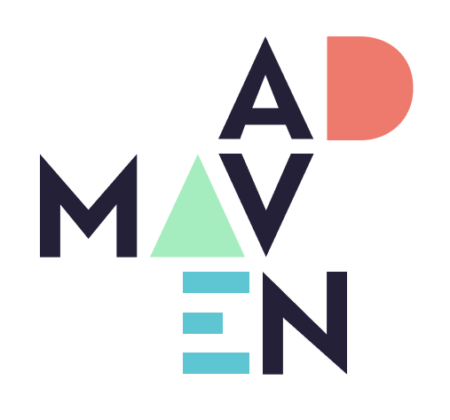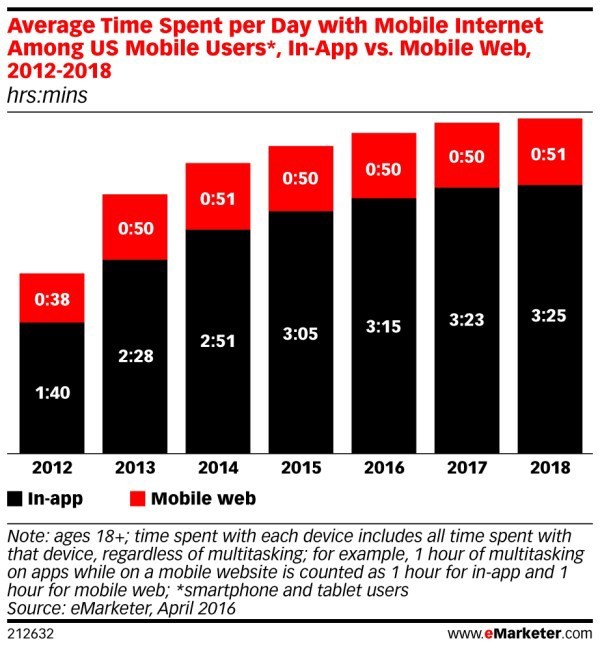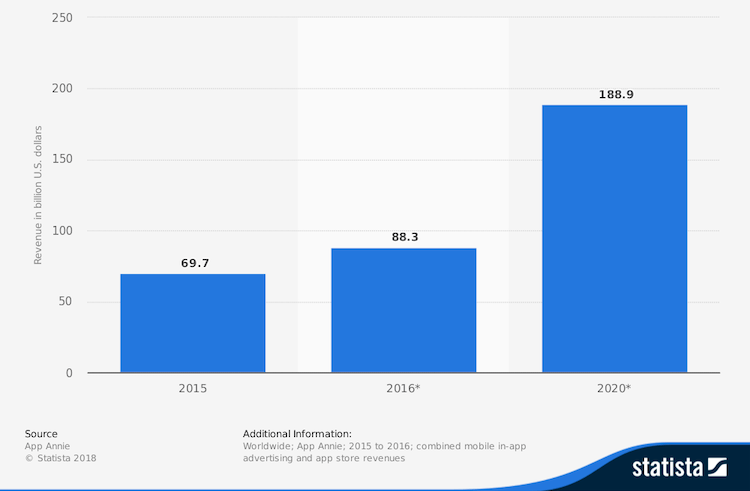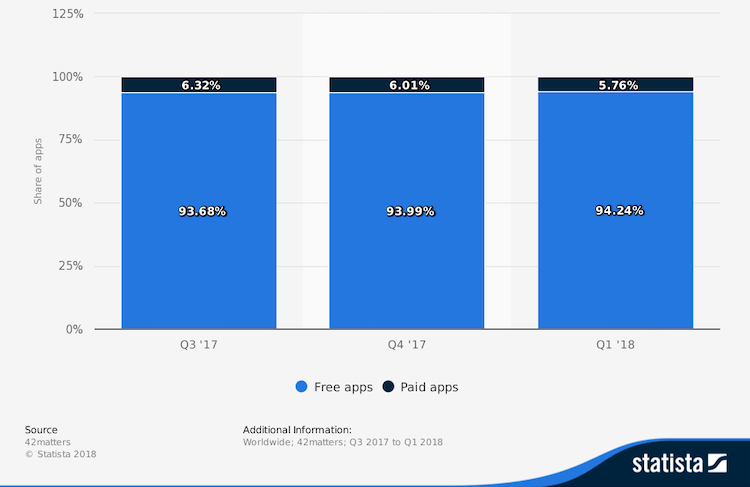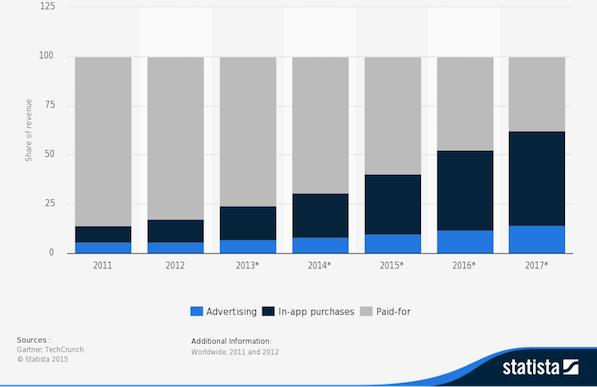There are more than 5.5 million mobile apps, iOS and Android OS combined, installed on people’s smartphones and tablets. And it all started with just several thousand back in 2008. This monumental growth of the app industry is fueled by smartphone, tablet, smartwatch and other Wearables hardware innovation, the continuous shift from a featured phone to a smartphone use and the middle class growth in Asia, in particular in China.
In 2016 the total number of mobile app developers on the planet passed 12 million and by various estimates it is projected to reach 14 million by 2020. The majority of these people are in the app industry to make money, the competition is tense and so the question is – how to monetize an app, is it even possible? In this guide we want to lay out a number of app monetization approaches and models that developers use to generate revenue with apps from various app categories and mobile platforms worldwide. Each app project requires a careful consideration of these models. Once you began using a specific one(s), be really thorough about capturing KPIs, such as DAU (stands for Daily Active Users), ARPU (Average Revenue Per User), LTV (Life Time Value) and others, to reveal if your app underperforms. If that’s the case, don’t hesitate to experiment and try other models.
Table of Contents
- App Monetization Models
- In-app Advertising
- Paid Apps
- Freemium
- In-App Purchases
- Subscriptions
- Affiliate Marketing and Lead Generation
- SMS Marketing
- Email Marketing
- Sponsorships
- Licensing
- Crowdfunding
Before tapping into different techniques, we want to set the stage by providing you a general picture of an opportunity for app monetization. First of all, to make the case that it’s possible to monetize mobile apps, let’s establish how big is demand for mobile apps today. As you can see on the following graph, there is a steep trajectory for mobile apps popularity growth among mobile users. Back in 2012 people were spending around 1.5 hour with mobile apps on their smartphones and tablets accessing mobile internet. Now this number has doubled, nowadays people are completely OK with spending three and a half hour a day with beloved apps. Meanwhile the time they’re spending in a mobile browser merely increased from 38 minute in 2012 to 51 minute in 2018. Clearly people spend way more time in mobile apps than mobile web and therefore it presents an opportunity for app developers to monetize mobile apps.
Having said that, we need to realize that on the flip side – the competition is really big. According to multiple researches, the bulk of this 3.5 hours people tend to spend with a handful of apps (such as Facebook, Facebook Messenger, Instagram, WhatsApp) and the rest are destined to compete for their attention furiously.
Average time spent per day with mobile internet among US mobile users, 2012-2018, in hours and minutes
Source: eMarketer
Now, when we know that demand for mobile apps is big and on its way up, let’s assess how much money to be maid in the app industry. In 2016 the aggregated revenue generated from mobile app sales and in-app advertising reached $88 billion and by 2020 this number may jump to whooping $188 billion. This more than 200% growth indicates that there is a big monetization landscape in the app industry that app developers can claim a part of.
Worldwide mobile app revenues in 2015, 2016 and 2020, in USD
Source: Statista
If we look at the ratio between the number of free and paid apps on the Google Play marketplace on the following graph by Statista, we see that more than 90% of all apps in fact are free and hence the focus of developers app monetization strategy should be on the models that cover the free apps landscape, more on it later. And the second takeaway is that the percentage of paid apps is shrinking, slowly but surely.
Distribution of free and paid Android apps in the Google Play Store from 3rd quarter 2017 to 1st quarter 2018
Source: Statista
Broadly speaking, all app monetization methods can be placed in three big buckets – In-app Advertising, In-app Purchases and Paid Apps. Let’s start with one of the most popular of these three – In-app Advertising.
Top App Monetization Companies
App Monetization Models
Before talking about various mobile ad formats let’s layout three most popular business models for mobile ads – eCPM, CPC and CPA.
effective Cost Per Mile (eCPM) model
From an app publisher perspective this model is the most lucrative because it rewards her or him, regardless if mobile users actually took any action with a mobile app ad and can be calculated using the following formula:
where Total Earnings is the value of revenue that app publisher generated with a specific ad, divided by total number of impressions this ad has acquired over the period of an ad campaign duration.
Cost Per Click (CPC) model
Compared with eCPM, Cost-Per-Click model is based on a mobile user taking an action – clicking on a mobile ad. To calculate CPC we need the following formula:
where Total Ad Spend is the amount of money spent on an ad, divided by the number of clicks that were delivered. As every model it has its own pros and cons. To the pros side we can attribute the fact that with CPC model publishers are in a good position to attract more numerous and hopefully diverse pool of advertisers, for whom this model caters as more measurable and delivers better ROI. Also it allows to actually measure mobile users behavior. On the flip side if a specific mobile ad doesn’t deliver high click-through ratio, CPC won’t be profitable for an app publisher. Using this model, it’s way harder for app developer to predict his revenue and build a financial pipeline.
Cost Per Action (CPA) model
The third model that is available for a mobile app publisher to monetize her or his app inventory is Cost-Per-Action or CPA. According to this model, publisher gets paid only when mobile users take specific action(s) once they saw a mobile ad, clicked on it and then either downloaded an app and launched it at least once, or made an in-purchase, subscribed to a service and more. On the bright side of this model is that it has a potential to generate high revenue for an advertiser and so conversely app publisher may expect a higher payout. On the dark side – this model has the highest risk for app developers to be forced to deal with mobile ad fraud.
In-app Advertising
By the time mobile took off in 2008, with the launch of the first mobile app stores by Apple and then Google, the digital advertising monetization model was well established on the web. Naturally app developers adopted it to their mobile apps but by then existing banner formats needed to be adjusted to a much smaller digital screen real estate. Over time a number of banner formats became the norm for mobile app advertising and these formats are – Interstitial, Banner, Video, Native and Text. Today app developers can advertise other apps using a service of a wide range of so-called Advertising Networks, where they can place ads inside other apps and websites to target specific audiences to drive traffic to their app(s).
Interstitial Ads
This ad format is the biggest one in terms of its size, essentially an Interstitial ad is meant to occupy an entire smartphone screen to capture all mobile user attention to a specific ad message. Such ads are a double edged sword because on one hand they do ensure that mobile users see an ad, on the other – people do get they annoyed by such ads often and hardly receptive to an ad message that app advertisers try to deliver. We can use Admob eCPM data as a good proxy for how much it’s possible to make with Interstitial ads on iOS and Android apps. According one case study, for US market it’s: $3.50 on Android and $7.20 on iPhone (eCPM refers to what you earn for every 1000 impressions).
Banner Ads
This mobile ad format is an equivalent of a desktop banner ad but has its own limitations. Because it occupies only a small area on a smartphone screen mobile users pay way less attention to it. The Cost-Per-Mile rates for banner ads on iOS are $0.20 to $2.00, on Android apps – $0.15 to $1.5.
Video Ads
Video ads is one of the most effective mobile ad formats of today, the leaders in this space are Google, Facebook, Vungle. In a nut shell, a mobile video ad is a short, unto 15 seconds in length video that introduces an app and provide a direct link to follow to download it. An average CPM rates for mobile video ads ranges $0.50 to $5.00.
Native Ads
From all types of mobile ad formats, native Ads is the one that app marketers distinguish as the most effective because essentially mobile users don’t perceive native ads as regular digital ads and hence aren’t annoyed by them as much. Native ads can be designed in multiple sizes and implemented differently on different media and therefore their average pricing varies significantly. Let’s take Taboola, one the biggest content delivery and advertising platforms, native ads average rates as a good indicator of what kind of revenue app marketers should expect from native ads. In 2018 Taboola prices for native ads ranged from $.30 to $5.00 per thousand impressions.
Text Ads
Finally, the simplest form of a mobile ad, just like with a desktop, is a text ad. A Cost-Per-Click one of the two biggest online advertising platforms, Google AdWords is between $1 to $2 per click.
Paid Apps
Initially, when mobile app stores were just launched, the majority of mobile apps were paid and that was the only monetization model. Later on advertising and in-purchases kicked in and, if you look at data on the following graph, the Paid Apps model significantly shrank from about 90% back in 2011 to hovering above 50% by 2017. Today there are still several app categories for which the Paid Apps model is more lucrative than others. These are Utilities, Productivity, Photo & Video, Navigation. This model is the basis for the iOS App Store App Bundle concept that allows iOS app users to purchase and download a number of related apps from the same app developer at once. With this model app publisher gets paid for each time her or his app was downloaded separately or as a part of the aforementioned App Bundle. As of 2018, according to Statista, an average price for iOS paid apps was $4.37 and $4.86 for Android paid apps.
Share of global mobile app revenues from 2011 to 2017, by channel
Source: Statista
Freemium (try before buy it)
With this model app publishers offer mobile users to download apps free of charge to use with a limited set of features and charge them via in-app purchases for premium features, additional content, or digital goods. This model is direct equivalent of a free trial model for desktop software. It’s a matter of making a carefully deliberate choice for what app features to provide free of charge and which ones to put into an extra set you’ll be charging for your app users. The iOS App Store policy provides developers with multiple tiers for in-app purchases to provide flexibility to offer users extra features in different tiers.
In-App Purchases
On the iOS App Store there are four types of in-app purchases – Consumable, Non-Consumable, Auto-Renewable Subscriptions and Non-Renewing Subscriptions. The Consumable one covers in-app purchase of various consumable items in games that app users need to replenish while playing the game. Non-consumable type of in-app purchases relates to purchases that app users need to make once to expand the set of features an app offers. With Auto-Renewable type of in-app purchases app users can pay for specific services or periodically updated app content and the last one implies paying for subscription only once and then get an access for specific app content for a fixed period of time. As you can see on the graph above, over time in-app purchases claimed significant part of the app revenue and today they are number one app monetization tool in the app developers monetization toolbox.
One of the app monetization strategies that is particularly relevant to mobile games only is in-app currency. A typical example would be offering a mobile game users to buy via in-app purchase a set of coins for them to use in the game, e.g. 50 coins for $4.99.
Subscriptions
Quoting Apple’s description of the Subscription model:
Auto-renewable subscriptions give users access to content, services, or premium features in your app on an ongoing basis. At the end of each subscription duration, the subscription automatically renews until a user chooses to cancel it.
The pros of such model are as obvious as with any recurrent revenue generation model – financial predictability and ability to supply your app user base with a constant value throughout the app’s lifecycle. With this model, app developers can offer multiple plans with options to upgrade, downgrade and crossgrade (when mobile app users switch from one subscription plan to a comparable one). The major feature of this model that appeals to users is that with Subscription model developers can offer a discount for a long subscription period.
Affiliate Marketing and Lead Generation
Such time proven monetization strategy as affiliate marketing can be yet another way for app developers to monetize their mobile inventory. In a nutshell, affiliate marketing for mobile apps is about being rewarded with a commission fee for every instance when a mobile app was downloaded or specific action was taken with an app via the link placed inside your app. To make it work for you app monetization strategy, you need to choose what specific apps to promote inside your application, apps that can compliment your app for your users experience. There is one specific kind of affiliate marketing, which is Lead Generation, in this case it’s a process of not selling products or services but capturing contact information of people who are genuinely and explicitly interested in purchasing specific services or products. In this kind of affiliate marketing program you’re getting paid for such capturing and supplying this information to a company that is looking for such leads.
SMS Marketing
There is one app monetization technique that is quite often overlooked because marketers may consider it an old school, while in reality it’s quote the opposite. It’s about SMS marketing, using the channel that still invokes strong engagement that other marketing channels can’t be proud of. To monetize an app with this channel efficiently, app publishers need to use databases of smartphone users contacts that were collected with an explicit consent only. Creating a text message, publishers need to keep in mind that most likely this message will distract people from being busy with something, meaning it should be polite, to the point and preferably with a bit of a humor.
Email Marketing
Email marketing is one of the oldest types of online marketing and it has been in use since early 2k. With the advent of Social Media and mobile, for some time Email marketing went out of fashion but then came back and now it is an effective app monetization tool, if done right. About 75% of Millennials use email to communicate with businesses and the reason why it’s become an effective marketing tool again is that other channels are too cluttered and so people naturally lean back to email to be able to parse business related information efficiently. There are several structural components that you need to have in place to monetize your app via email marketing effectively. Such as – multiple channels to capture email addresses to build a list for further communication (a website, social media channels, in-app form), robust email marketing management tool, well-thought strategy of how you’ll be presenting your app to your audience and how you’ll be able to keep it engaged about your app and stay relevant down the road.
Sponsorships
There is a type of advertising that isn’t that obvious to app publishers – a sponsorship. If your app has a big user base and it has a high level of users engagement, you may consider brainstorming what other company can benefit from offering its products or services to your audience and conversily how it will benefit your users to make it work. Essentially by using this model, you get a single advertiser in your app that will tackle all your app revenue generation potential. Technically speaking, a sponsor in your app can be presented with an icon, cover a bigger portion of the app’s interface with its logo, via a splash screen that is visible to your app users right after its launch or via Push Notifications.
Licensing
If an app functionality implies collecting user-generated data (don’t forget that if that’s the case, user consent on data collection should be paramount for your business strategy) or you have technical means to collect data such as geo-locations, you should consider licensing your data to other businesses. By doing so you will be able to provide an app for free to your end users and monetize your app via its data licensing. Couple of well known examples of such strategy are Waze and Foursquare.
Waze is community-based traffic and navigation app. Its business model is based on licensing its community driven data collection to businesses that need to place location-based ads.
Foursquare is a local search & discovery mobile app. It licenses its point of interest geolocation data to Apple, Inc, Google, Inc. to use in its Apple Maps and Google Maps products respectively.
Crowdfunding
Platforms such as Kickstarter, IndieGogo, GoFundMe, Patreon and others can be yet another channel for you to monetize your mobile app. As good as these platforms are for crowdfunding, you need to understand that by definition they are highly unpredictable in terms of what actual revenue you can generate with each and how stable this revenue generation stream will be. This channel can be the way to generate an extra income but, by no means, the major one. A smart strategy for using crowdfunding for making money with your app would be studying similar apps experience – basically answering the question do they meet specific funding goal that is set or not?
Final Thoughts
A mobile app is a business and you need to treat it this way and so a solid marketing plan is what its development should always begin with. As of 2019 a mobile app is not a deal maker anymore, it is just one of the means e-commerce businesses sell a product or service. It is a channel and this notion should inform your decisions about what app monetization strategy to choose.





